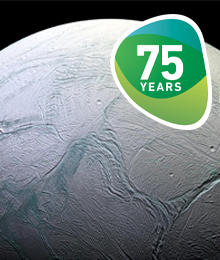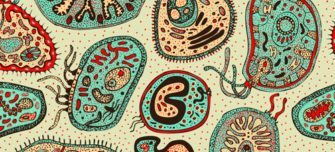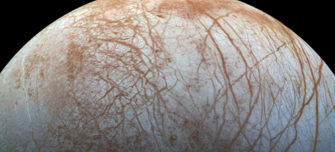New frontiers in microbiology

Exploring new frontiers in microbiology
In the 1970s a 'third domain of life' was discovered. Archaea are deemed remarkable objects of investigation due to their exquisitely distinctive biological properties and macromolecules. This discovery sparked many questions about the origin of life and the potential to understand how biological systems work, as archaeal organisms provide unique resources for investigations, to uncover the diversity and complexity of the immune system.
Microbiologists began to piece together how biological systems work from their constituent parts, allowing scientists to design organisms that perform a bespoke function. As the field of synthetic biology develops, real-world applications are moving from the realms of ideas and laboratory-confined research towards implementation.
Originally, many scientists were under the impression that deep-sea vents held the key to where life originated. Compounds found here, could be synthesised at the bottom of our oceans, and despite it being dark, there are lots of organic molecules and micro-organisms where life has been found. This led scientists to take their research beyond our world, conducting missions to planets including Mars. They have been looking to identify if the ‘Red Planet’ had oceans in the past, given that we know micro-organisms have the capacity to survive in water.
Why does exploring new frontiers matter to microbiology?
As we have progressed through the 21st century, we have expanded and developed our understanding of how microbes are related to and interact with each other. Microbiology research has been, and continues to be, central to meeting many of the current global aspirations and challenges, such as maintaining food, water and energy security for a healthy population on a habitable earth. Through research, microbiology helps answer big questions such as 'how diverse is life on Earth?', and 'does life exist elsewhere in the Universe'?
We will explore three key areas which are helping us to develop a better understanding of new frontiers in microbiology below. Click on each content hub to find out more about how the microbiology community is working to understand how research has evolved, and access our further reading materials and additional resources.
-
The ever-growing tree of life
The third domain of life was discovered in the 1970s. This mysterious group of organisms, the Archaea, remain one of the biggest puzzles in microbiology. Although superficially they look similar to bacteria, in evolutionary terms they couldn’t be more different.
-
Synthetic biology
Synthetic biology is a field that applies engineering principals, such as mathematical modelling or modularisation, to biological research. One of the technical advances that has significantly increased the ability to undertake synthetic biology, has been to artificially synthesise DNA, in order to create DNA parts.
-
Life on other planets
One of the biggest questions in astrobiology is how life originated on Earth. The building blocks of life and the organic molecules fundamental to life were present on Earth from the primitive Earth, where the basic unit of life, a cell, was formed. How this was done, is one of the main focused areas of research within astrobiology.





